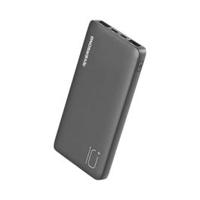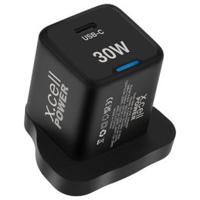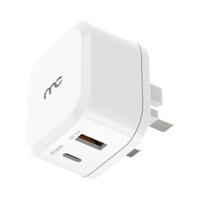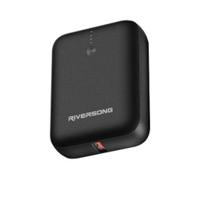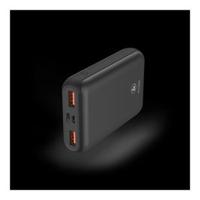About Batteries
Batteries serve an essential role in our day-to-day lives, from powering our automotive to acting as backup power sources in transportation and telecommunication operations. They enhance our well-being by reducing greenhouse gas emissions and offering a safe and reliable source of electric energy. Therefore, you should explore the wide range to acquire safe and environmentally friendly products at an affordable rate!
Batteries are devices comprising diverse electrochemical cells. These cells link up with external connections to power various electronic devices, including automobiles and mobile phones. A battery consists of two main components, including the anode and cathode. When supplying electric power to a mobile phone, the negative terminal is the anode, and the positive one is the cathode. The negative terminal is the primary source of electrons that transmits via an electric circuit to the positive terminal. When connecting a battery to an external electric load, high reactants are converted to lower-energy products via a redox reaction. At the same time, the free-energy difference conveys to the external circuit as electric energy.
History of batteries
The battery by Benjamin Franklin in 1748 refers to diverse Leyden jars. The antique product by Alessandro Volta came up in 1800. Volta mentions his invention as a stack of zinc and copper plates, separated by paper disks and brine-soaked. He further claims that the traditional electrochemical battery has the aptitude to produce a steady current for a specified period. However, he could not comprehend certain other factors. Despite the positive impact of the antique battery on experimental tenacities, its voltage oscillated to the point that it failed to offer more current for a long period. Consequently, John Frederic Daniell comes up with a copper pot. In it, an unglazed earthenware container with zinc electrode and sulfuric acid immerses into a copper sulfate solution.
Principle of operation
Batteries alter chemical energy to electrical energy through chemical reactions. The electric energy released entails the difference in the cohesive or bond energies of molecules, oxides, or metals undergoing the electrochemical reaction. For example, electric energy in lead and zinc plates are high-energy metals owing to their instability. A battery encompasses a unique design to only permit redox reaction when electrons transmit via the external part of a circuit. It comprises diverse voltaic cells, which are made by connecting two-half cells in series using a conductive electrolyte. The first half-cell comprises an electrolyte and negative electrode. In contrast, the remaining half-cell encompasses an electrolyte and positive electrode. The terminal voltage developed is based on the amount of energy released from the chemical reactions of the electrolyte and electrodes.
Primary batteries
Primary batteries work on use and discard function as soon as they exhaust electric energy. This is because the chemical reactions in primary batteries are irreversible and possess no facility to recharge. For instance, when the supply of reactants in a battery diminishes, the device halts, producing current thus rendering it inoperable. A primary type in portal gadgets is common that register low current drain. An example is a primary battery in communication and alarm circuits where other forms of electric power are occasionally available. After use, the active materials in the primary batteries do not return to their original form. In brief, primary cells offer electric energy to portable gadgets and are not rechargeable due to their irreversible chemical reactions.
Secondary batteries
Secondary cells are rechargeable batteries that allow you to reverse their chemical reaction by applying an electric current. Following the use of a secondary battery for an extended period, you may generate the original chemical reactants by charging the device with a charger. You must charge the secondary types before use to activate the assembled active materials. The lead-acid battery happens to be the oldest version of secondary batteries and find common uses in automotive applications. Secondary cells comprise liquid electrolytes in an unsealed container which necessitates a well-ventilated storage room for the dispersal of hydrogen gas. Other portable rechargeable batteries include the dry cell often incorporated in laptops and mobile phones. The current development for a secondary battery encompasses the flow-cell device, which fosters cheap large-scale energy storage by using large containers.
Tips on how to buy Batteries
To understand a preferable battery, you must first gain insight into the different types of powering devices in the market. An ideal battery should encompass unique characteristics, including high performance, minimal environmental impact, and long duration. The following factors will help you achieve the most appropriate decision when making purchases on Shops.ae.
- Size – You must understand the type of battery you require since their sizes differ from one brand to another. Evaluate the current battery in your device and replace it with a battery of equivalent dimensions. The instruction manual on each device dictates the type and size of the Makita battery to purchase to attain high performance.
- Company reputation – Owing to the wide range of brands selling batteries on Shops.ae, you must be vigilant in selecting the most appropriate brand. Assess the company’s quality check rating to determine the legitimacy of its Anker powercore 20100. Additionally, evaluate customer reviews on online sites concerning the product of your desired brand.
- Expenditure – The cost of a battery on Shops.ae should be your concern when making purchases. Every brand has a unique way of determining the prices of its products. It is important to consider your financial aptitude to avert unexpected expenses.
- Principle of operation – Our batteries ranges from rechargeable to single-use devices. Rechargeable batteries offer long-term value but are expensive. The single-use batteries are cheaper but require disposal after they are fully discharged.
- Safety – You must consider the safety of your device and the people around you when making purchases for batteries for mac. The hydrogen gas produced by a battery is extremely explosive. Acquire products that foster your wellbeing and promote the safety of your valuables.
Batteries are devices comprising several electrochemical cells that are linked to external connections to power a wide variety of electronic devices, including automobiles and mobile phones. The batteries on Shops.ae differ in their capacities and sizes. Explore our online search engine to access the wide spectrum of batteries and other multimedia products from diverse brands in the UAE!
Question & Answer
Are batteries allowed in hand luggage?
Stringent measures are often developed and implemented in diverse airlines to ensure the safety of passengers when travelling. The governing bodies implement safety guidelines for the type of battery being transported on aeroplanes to avert fire-related incidents. Security officers enrol in training programs to attain the skill of recognizing potential security and safety battery-related threats in hand luggage. Dry cell alkaline batteries, including the button-sized cells and 9-volt categories, are allowed in hand luggage. Moreover, lithium io batteries with less than 8 grams are also permitted in hand luggage. Lithium-based batteries are often incorporated in cameras, mobile phones, and other small-sized personal devices. Conversely, car, spillable, and wet batteries are prohibited from checked and carry-on luggage except for those used to power mobility aids.
Where to buy batteries online in UAE?
Shops.ae encompasses a wide range of rechargeable and non-rechargeable batteries. Our products differ in size, weight, and discharge frequencies. To buy rechargeable batteries online in UAE you should explore the wide spectrum of offers on our UAE search engine . We appreciate the disparities in our clients’ preferences and focus on satisfying all your needs by the sale of batteries from diverse brands. For example, we offer the most effective rechargeable batteries from recognized brands such as Samsung, Xiaomi, Panasonic, and Exide. Moreover, we provide our clients with portable and durable primary batteries from prominent companies, including Duracell and Energizer. For cheap Ryobi batteries and the best AAA batteries, consider evaluating the interesting offers on our online platform. To acquire cheap deep cycle batteries and the best batteries for trail cameras, you should explore Shops.ae for quality products at a friendly rate.
What batteries are rechargeable?
Secondary cells encompass rechargeable batteries that store electric energy at their electrode by reversible redox reactions. The type of electrolyte-based batteries ranges from nickel-cadmium, lead-acid, magnesium ion to lithium-ion batteries. Nickel-cadmium is among the oldest rechargeable battery that was popularly sold in the 1990s for domestic use. This antique battery pack used nickel hydroxide as the positive electrode whereas potassium and cadmium hydroxide was employed as the negative electrolyte and electrode respectively. Owing to their exceptional conductivity properties, nickel-cadmium batteries are able to charge and discharge rapidly. Additionally, these batteries are able to operate at low temperatures and have an energy density of approximately 50Wh/kg. The use of lithium-ion batteries is becoming widespread owing to their lightweight and high energy density of about 160W h/kg.
Where to buy laptop batteries online in the UAE?
Shops.ae offers durable and affordable laptop batteries from prominent companies in the UAE. For instance, you may purchase laptop batteries on our online site from popular brands such as Samsung and Panasonic. Our laptop powering devices can be nickel-cadmium, lithium-ion, or nickel-metal hydride batteries. Each of these batteries registers a unique principle of operation necessary in generating electric energy. Our laptop battery encompasses desirable capacities in regards to its weight, useful cycle, and rate of self-discharge. For example, our devices may take up to more than 24 hours for a fully-charged battery to facilitate a recharge. Therefore, you should purchase our laptop battery which is available in different sizes and capacities.



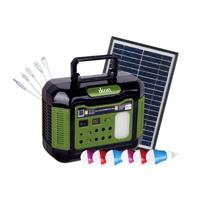








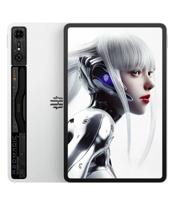

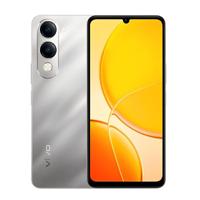
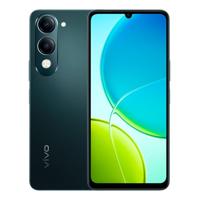

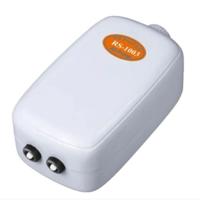
![ASUS 65W USB-C GaN Charger [90XB09AN-BPW020] ASUS 65W USB-C GaN Charger [90XB09AN-BPW020]](https://assets.shops.ae/products/Shopping/2439f41721943f830c088eb1531d5ec7.thumb.jpeg)

